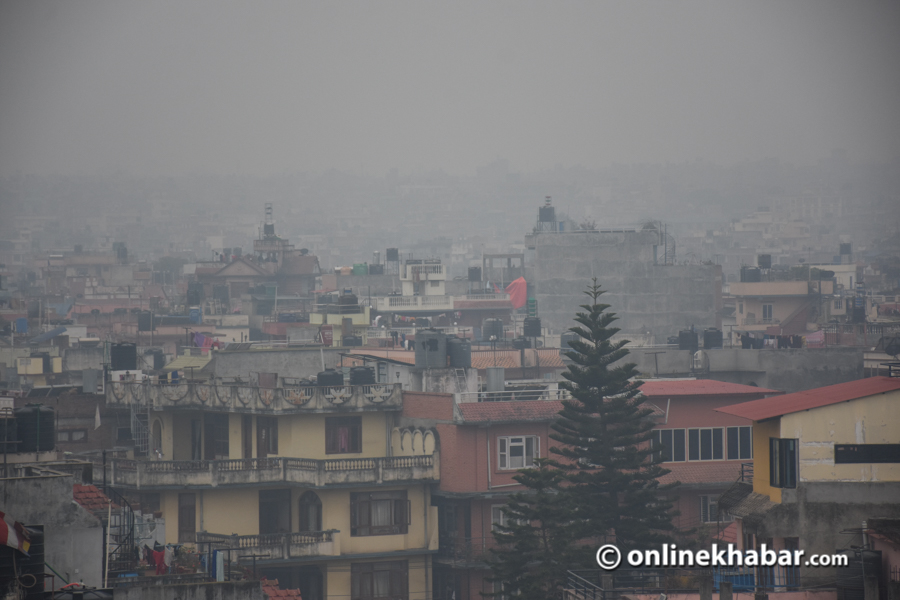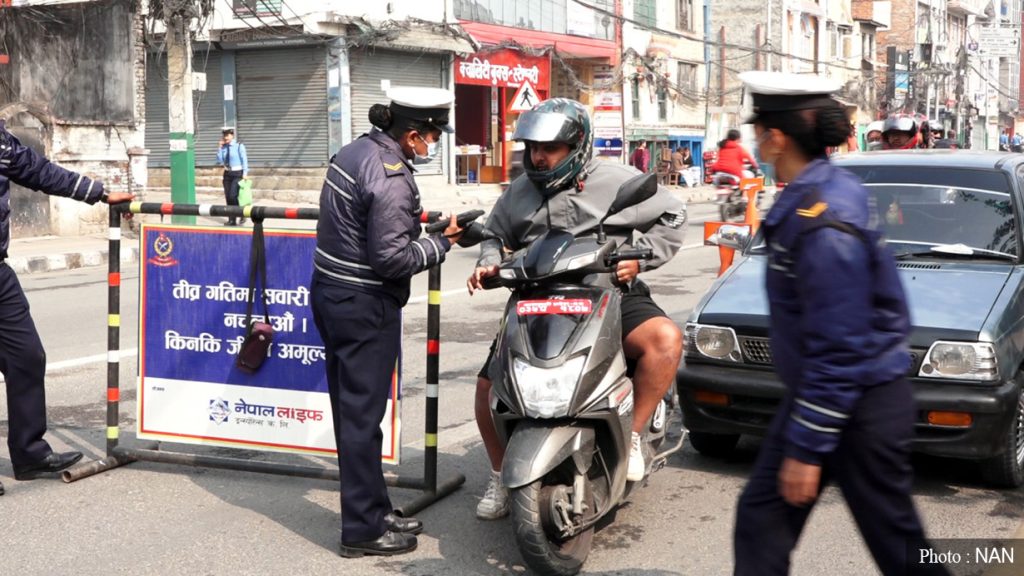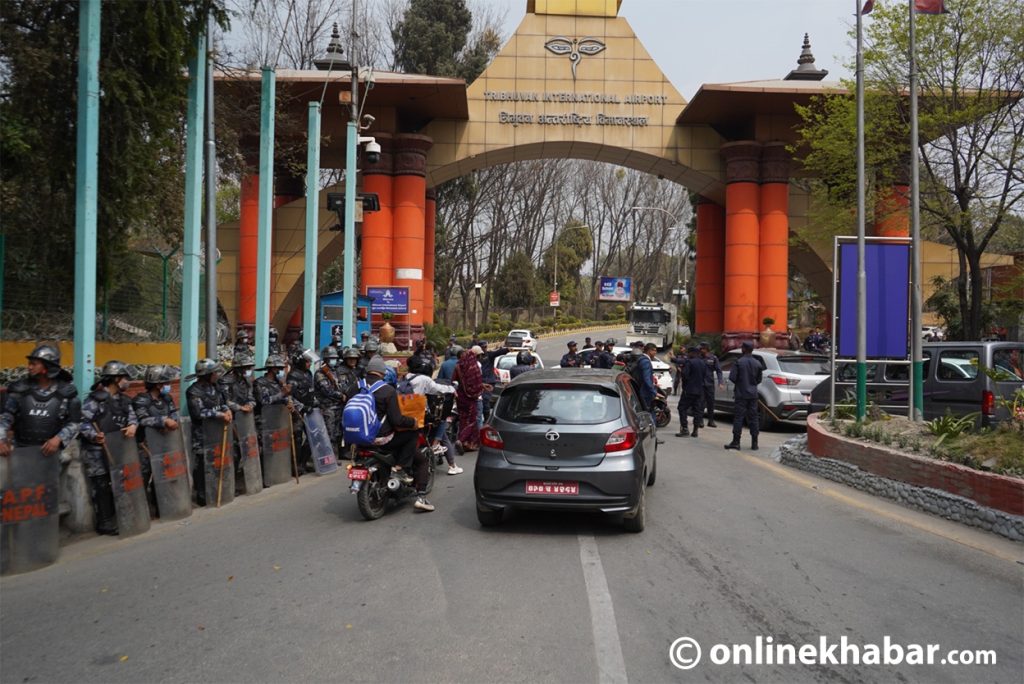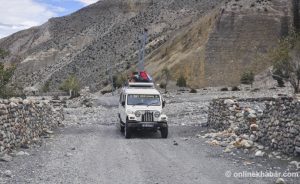
Case 1
Rita (name changed) 17-year-old came to Kathmandu from Syangja. She was influenced by her neighbouring sister, Laxmi (name changed) who worked in Kathmandu. Whenever Laxmi visited her family, she used to dress well accessorising expensive jewellery. Laxmi had told Rita that in Kathmandu there were good job opportunities with attractive salaries. Hence, with a dream to own clothes and jewellery like her, Rita came to Kathmandu. Rita’s dream shattered to pieces when she realised how Laxmi was able to have such a lifestyle. Laxmi was a sex worker and she arranged a job for Rita in a khajaghar (a local eatery) in Naya Bus Park. Initially, she was offered the job of a helper in the Khajaghar, but later they made her involved in sex work.
Case 2
A 16-year-old, Neeru (name changed) had the same fate as Rita. She too was lured to Kathmandu by her neighbouring sister, who was in the sex business in Kathmandu. She told Neeru that Kathmandu would offer lavish opportunities.
The 16-year-old believed her, being influenced by her fancy attire and conversation. When she came to Kathmandu, she was also initially hired as a helper and later coerced into becoming a sex worker.
Case 3
Ramina (name changed), a 15-year-old from Surkhet came to Kathmandu to study. She got admitted to a school and was studying. After school, she usually visited a khajaghar near her school in Tarkeshwor with her friends. While she was having food, she noticed some girls of her age who talked about their bank balances and other things. Out of curiosity, she made them her friends and the desire for a good bank balance led her to the wrong path. Those girls were sex workers, which she was unaware of. She dropped out of school and ended up becoming a sex worker in a khajaghar.
All the above-mentioned cases have three similarities. Firstly, the central people are minors. Secondly, they got into the sex business because the ones who allured them did not tell them about the reality of their profession or how they were sustaining their lives.
Thirdly, all the minors mentioned above have been trafficked to the khajaghar without their awareness.
The false truth

According to the SP and spokesperson of the Anti-Human Trafficking Bureau (AHTB), Gautam Mishra, those involved in sex work tend to hide their reality and pretend to live lavish lives for the sake of their reputation. They boast about their salary and lifestyle. As a result, this entraps other innocent people, particularly minors, who come from weak economic conditions. According to the police, most of the minors are allured similarly.
“The minors are easy to manipulate. They do not have strong critical thinking skills and are easily attracted to things that appear glamorous without knowing the reality behind them,” says Mishra, “If only right and true information is provided to them, many minors can be saved from being trafficked.”
Benu Maya Gurung, executive director of Alliance Against Trafficking in Women and Children in Nepal (AATWIN), a national-level network against human trafficking agrees with Mishra about how minors are lured by people they know who conceal the reality of their profession.
Since minors are not mature enough to make decisions, the National Penal Code states that any act of physical relation done with the consent of a child below 18 years shall be considered an offence.
When it comes to human trafficking, people often think only about cross-border trafficking. However, internal trafficking is also a serious case which is neglected. Moreover, the cases of minors being trafficked, specifically into khajaghars, are growing.
According to police data, in the fiscal year 2020/21, 36 minor girls involved in sex work were rescued from khajaghars across the country. Similarly, in the fiscal year 2021/22, 64 minor girls were rescued. In the fiscal year 2022/23, 59 were rescued, and in 2023/24, 85 were rescued. AHTB has informed that more operations to rescue minors are ongoing. The reason behind the surge of such cases is unemployment, and a desire to be rich overnight.
According to police data, from November 2023 to the fourth week of May 2024, a total of 11 cases of trafficking of minor girls in khajaghars have been recorded, resulting in the arrest of 18 people.
Why Khajaghars ?

Gurung says that in recent times khajaghar has been a hub for the traffickers and the above-mentioned data serves as a testament. But, the government, despite being aware of it, has not been able to do anything significant about it.
“In the last couple of years, the police and organisations working against human trafficking have been doing frequent monitoring in restaurants and other entertainment sectors, which is posing a risk for the traffickers,” says Gurung, “However, as the demand for sex business is still there, the traffickers have found khajaghars as a safe place to run their business.”
Gurung further says that it is a trafficker’s nature to find a new place to run their business when they find their older place is at risk. Earlier, the traffickers operated in brick factories and carpet factories, then they shifted to places like restaurants and spa centres, and now they are operating in khajaghars.
Besides Kathmandu, Dharan and Pokhara are other such places where the minors are being trafficked in khajaghars.
“The traffickers found khajaghars to be an appropriate place to run their business because they appear less suspicious, being places where people simply go to eat and spend a short amount of time,” says Gurung, “Additionally, the infrastructure of many khajaghars looks simple, often just made of tin, making it difficult for anyone to suspect the illegal activities happening inside.”
When rescued, the minors are often found in a critical mental condition. Mishra says that most of them appear mentally disturbed, and traumatised and are unable to express themselves well. Some are even found to be addicted to cigarettes, alcohol, and other forms of drugs. Even after they are sent to a safe house, they show a desire to smoke.
It has also been found that the owners of the khajaghars have coerced the minors to have sexual relationships with multiple people in a day.
According to the AHTB, most of the minors who were rescued come from families living in poverty. Other causes that compel these minors to choose such a wrong path include having an alcoholic father, parental disputes and separation, neglect from parents, and child marriage.
The Nexus

While informing about the trafficking of minors in khajaghars, Mishra of AHTB also informed OnlineKhabar about a nexus in Kathmandu that keeps an eye out to identify potential victims.
Most of them are placed in bus parks. When they find someone, they first ask if you are searching for a job. If yes is the answer, they will say that they have a job as a waiter and cleaner which will pay around 10 to 12 thousand per month, promising to increase the salary soon.
Then, as they are hired, it all starts with a bad touch. When they complain about it to the owner, they remain indifferent to it and ask to tolerate it, considering it normal. Slowly, they allure the minors for prostitution, showing a dream to earn more money. Some of the owners even threaten those minors that they will expose their photos and videos of sitting with different people.
The owners of khajaghars arrange clients for these minors and negotiate the price, starting from Rs 1,000. They have even been found sending the minors to the client’s place using a ride-sharing app.
No significant efforts yet
While the cases of trafficking of minors are growing, AHTB has been taking some preventive steps as well.
According to Gautam, the bureau has been frequently conducting awareness programmes in schools and different wards, posting audio/video awareness content on their official social media handles, distributing brochures and pamphlets and collaborating with various NGOs and INGOs for the prevention and rescue prevention. Likewise, the bureau has also made an awareness movie Mansara, which is available on YouTube.
Udaya Kumar Gupta, head of the Child Labour and Occupation Safety Department, which runs under the Ministry of Labour and Employment also agrees that the government has not made any significant effort to address the issues of trafficking of minors.
“To address this issue we need to monitor larger areas and for that, we have very limited resources due to which our efforts haven’t reached up to the mark,” says Gupta, “In that regard, we have started collaborating with the local level, unless locals get involved in it, we can not do anything notable.”
The department has already conducted programmes related to this issue in different municipalities of Chitwan and Nawalparsi.
To prevent the trafficking of minors, Gurung urges the concerned government bodies to study the issues and form appropriate policies thoroughly. She also emphasises the need for regular monitoring. The local level government should put extra effort in such cases, they should strictly monitor their areas, utilising their resources, she says.
“To make our effort impactful we will provide technical and financial aid to the local government,” says Yadav.


























